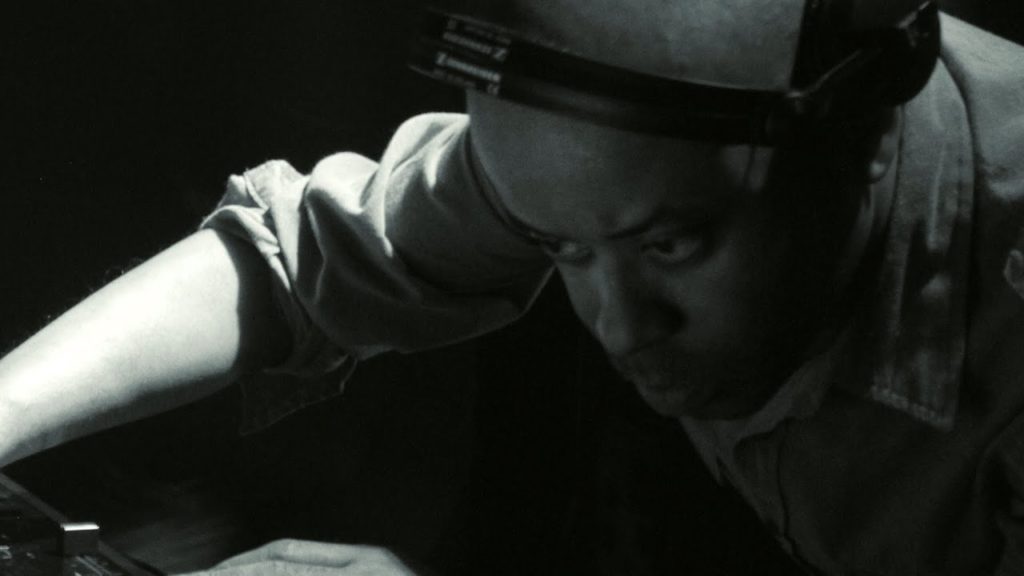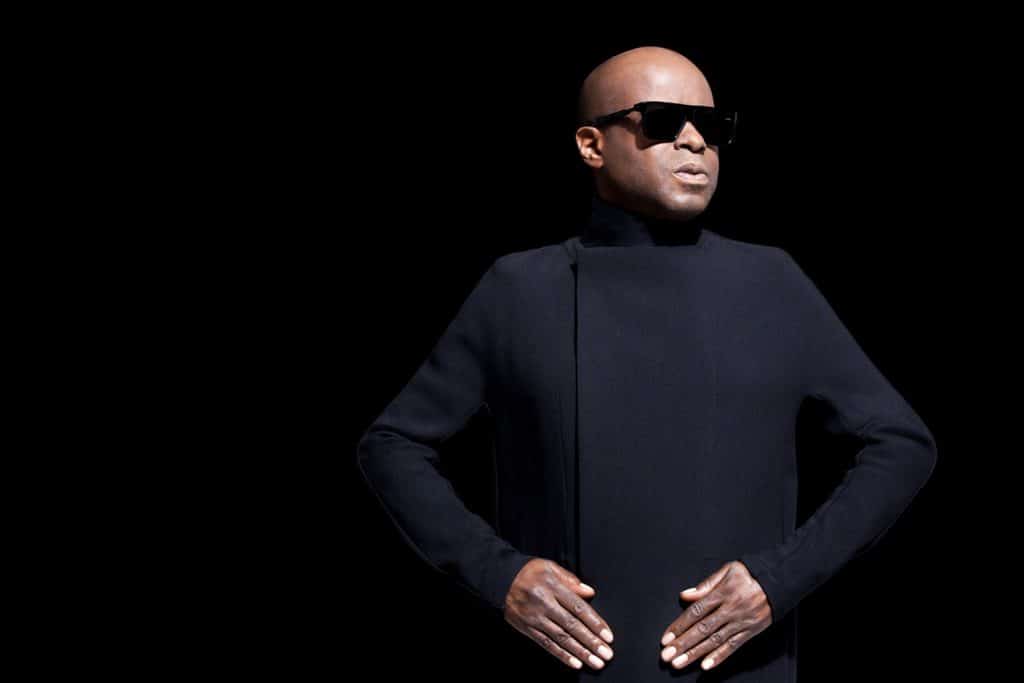Juan Atkins is recognized as one of the creators of techno music. From this arose the group of genres now known as electronica. He was probably also the first person to apply the word "techno" to music.
His new electronic soundscapes influenced almost every musical genre that came after. However, with the exception of the followers of electronic dance music, few music lovers recognize the name Juan Atkins.
Despite the existence of an exhibition in the Detroit Historical Museum dedicated to this musician, he remains one of the most obscure contemporary musical representatives.

Techno music originated in Detroit, Michigan, where Atkins was born on September 12, 1962. Fans around the world have associated Atkins' music with the often bleak landscapes of Detroit. They featured abandoned buildings from the 1920s and old cars.
Atkins himself shared his impressions of the devastated atmosphere of Detroit with Dan Cicco: “I was blown away being in the center of the city, on the Griswold. I looked at the building and saw the faded American Airline logo. The trail after they removed the sign. I learned something about Detroit - in any other city you have a bustling, thriving downtown."
However, the real beginning of the history of techno music did not happen at all in Detroit. Half an hour southwest of Detroit is Belleville, Michigan, a small town near the highway. Juan's parents sent Juan and his brother to live with their grandmother after the boy's school performance declined and violence began to flare up on the streets.
As a middle and high school student in Belleville, Atkins met Derrick May and Kevin Saunderson, both emerging musicians. The trio often visited Detroit for various "hanging out". Later, the guys became known as The Belleville Three, and Atkins got his own nickname - Obi Juan.
Juan Atkins influenced by radio host Electrifying Mojo
Atkins' father was a concert organizer, and at the time when the boy grew up, there were various musical instruments in the house. He became a fan of a Detroit radio jockey named Electrifying Mojo (Charles Johnson).
He was a free-form musician, a DJ on American commercial radio, whose shows combined genres and forms. Electrifying Mojo collaborated with various artists in the 1970s such as George Clinton, Parliament and Funkadelic. At that time, he was one of the few American DJs who played experimental electronic dance music on the radio.
"If you want to know why techno came to Detroit, you have to look at DJ Electrifying Mojo - he had five hours of radio every night with no format restrictions," Atkins told the Village Voice.
In the early 1980s, Atkins became a musician who found the sweet spot between funk and electronic music. Even as a teenager, he played keyboards, but from the very beginning he was interested in the DJ console. At home, he experimented with a mixer and a cassette recorder.
After graduating from high school, Atkins attended Washtenaw Community College near Ypsilanti, near Belleville. It was through a friendship with fellow student, Vietnam veteran Rick Davis, that Atkins began to study electronic sound production.
Awareness of calling by Juan Atkins
Davis owned a wide range of innovative equipment, including one of the first sequencers (a device that allows the user to record electronic sounds) released by the Roland Corporation. Soon, Atkins' collaboration with Davis paid off - they began to write music together.
“I wanted to write electronic music, I thought that for this I should be a programmer, but I realized that it was not as difficult as it seemed before,” Atkins said in an interview with the Village Voice newspaper.
Atkins joined Davis (who took the pseudonym 3070) and together they started writing music. The duo decided to call Cybotron. The guys accidentally saw this word in a list of futuristic phrases and decided that this was what they needed for the name of the duet.

In 1981, the first single, Alleys of Your Mind, was released and sold about 15 copies throughout Detroit after Electrifying Mojo began airing the single on its radio program.
The second release of Cosmic Cars also sold well. Soon the independent label West Coast Fantasy found out about the duet. Atkins and Davis did not seek much profit in writing and selling their music. Atkins said they didn't know anything about the West Coast Fantasy label. But one day they themselves did not send a contract by mail for signing.
The song "named" a whole genre
In 1982 Cybotron released the track Clear. This work with a characteristic cold sound was later called a classic of electronic music. According to the classics of the genre, there are practically no words in the song. It was this "trick" that many techno artists later borrowed. Use the lyrics of the song only as an addition or decor for the music.
The following year, Atkins and Davis released Techno City, and many listeners began to use the song's title to describe the musical genre to which it belonged.
This new term was taken from futurist writer Alvin Toffler's The Third Wave (1980), where the words "techno-rebels" were often used. It is known that Juan Atkins read this book while still in high school in Belleville.
Soon disagreements began in the duet of Atkins and Davis. The guys decided to leave because of different musical preferences. Davis wanted to orient his music towards rock. Atkins - on techno. As a result, the first plunged into obscurity. At the same time, the second took steps to popularize the new music that he himself created.
Joining May and Saunderson, Juan Atkins created the Deep Space Soundworks collective. Initially, the group positioned itself as a community of DJs led by Atkins. But soon the musicians founded a club in downtown Detroit called The Music Institute.
A second generation of techno DJs, including Carl Craig and Richie Hawtin (known as Plastikman), began performing at the club. Techno music even found a place on a Detroit radio station on Fast Forward.

Juan Atkins: further work of the musician
Atkins soon released his debut solo album, Deep Space, titled Infinity. The next few albums were released on various techno labels. Skynet in 1998 on the German label Tresor. Mind and Body in 1999 on the Belgian label R&S.
Despite everything, Atkins was well known even in his hometown of Detroit. But the Detroit Electronic Music Festival, held annually along Detroit's waterfront, showed the true impact of Atkins' work. Approximately 1 million people came to listen to the musician's followers. They made everyone dance with nothing but electronic equipment.
Juan Atkins himself performed at the festival in 2001. In an interview he gave on Jahsonic's Orange magazine, he reflected on techno's ambivalent status as African-American music. “I can think that if we were a group of white kids, we would already be millionaires, but that can’t be as racist as it might seem at first,” he said.
“Black labels have no clue. At least the white guys will talk to me. They don't make any moves or offers. But they always say: "We love your music and we would like to do something with you."
In 2001, Atkins also released Legends, Vol. 1, an album on the OM label. Scripps Howard News Service writer Richard Paton commented that the album "doesn't build on past accomplishments, but still combines well thought out sets." Atkins continued to perform on both sides of the Atlantic, moving to Los Angeles in the early 2000s.
It was prominently featured in "Techno: Detroit's Gift to the World", a 2003 exhibit in Detroit. In 2005, he performed at the Necto Club in Ann Arbor, Michigan, near Belleville.
Interesting facts about Juan Atkins and techno
– The famous trio from Detroit for a long time could not afford expensive equipment for recording music. Despite the fact that all the guys came from prosperous families, from the entire “arsenal” of sound recording equipment there were only cassettes and a tape recorder.
Only after some time they acquired a drum machine, a synthesizer and a four-channel DJ console. That is why in their songs you could hear a maximum of four different sounds laid on top of each other.
– The German group Kraftwerk is the ideological inspiration for Atkins and his associates. The group began to create and decided to make a "coup". Dressed as robots, they took the stage with absolutely new “technical” music for that time.
– Juan Atkins has the nickname The Originator (pioneer, initiator), as he is considered the father of techno.
The record company Metroplex is owned by Juan Atkins.



